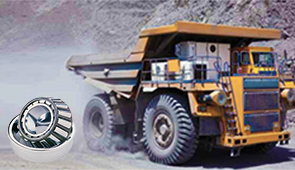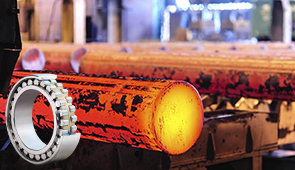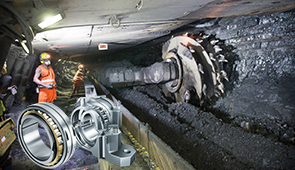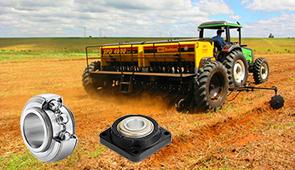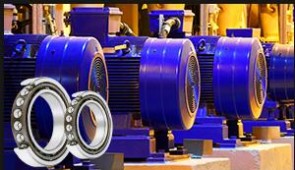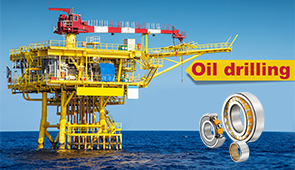Unlocking the Secrets of Effective Bearing Lubrication
Bearings are the unsung heroes of countless machines and devices, ensuring smooth operation and prolonging the lifespan of critical components. However, even the most advanced bearings are destined to fail without proper lubrication. Effective bearing lubrication is not just a routine maintenance task—it is a science that directly influences performance, reliability, and efficiency. This article breaks down the key principles of bearing lubrication, exploring the types of lubricants, application methods, and best practices that professionals must understand to optimize machinery and prevent costly downtime. Whether you’re a seasoned engineer or a maintenance specialist, this guide will equip you with the knowledge to master one of the most vital aspects of machine care.
What is the Importance of Lubrication in Bearings?
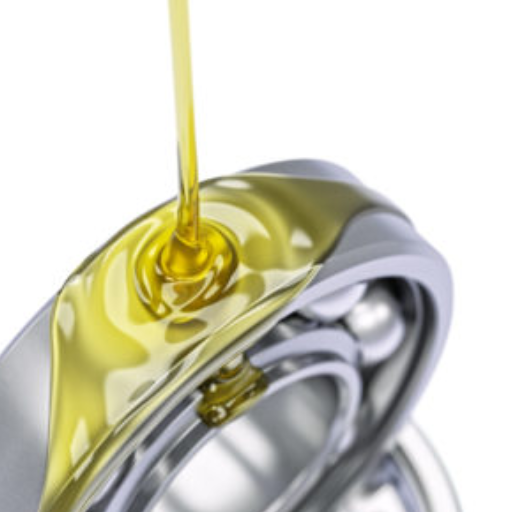
Understanding Lubrication Principles
The operation and longevity of bearings are largely dependent on proper lubrication. Lubrication minimizes friction between moving surfaces, lowering wear and tear and preventing direct metal-to-metal contact. This helps motion to become smoother, lowers the required energy, and improves the efficiency of the machines. Exceeding heat and friction will cause bearings to fail prematurely without proper lubrication, which would lead to expensive repairs and downtime.
Lubrication protects against contaminants as well. Particles like dust and dirt are capable of infiltrating bearings which will lead to abrasive damage and impact performance negatively. The right lubricant helps to seal out contaminants providing a cleaner operating environment and protecting bearing surfaces.
Temperature control is yet another area where lubrication offers assistance. There is a generation of heat owing to friction with the rotation of the bearing elements. There is no chance of overheating, and stable operating conditions can be maintained with effective lubrication, as it carries excess heat away from contact zones. Applying these principles and understanding them allows professionals to improve bearing reliability and efficiency, prolonging their service life and decreasing the frequency of maintenance.
How Lubricant Reduces Friction in Bearings
Lubricants decrease friction in bearings by forming a thin film which separates the moving parts. This way, sliding, rolling, and other types of motions will require less effort to overcome resistance. Without lubrication, metal surfaces will rub against each other, wearing out the components and producing excess heat which could result in the bearing malfunctioning sooner than expected.
Effective lubricant selection is vital for adequate friction reduction. Greases and oils are the most widely used lubricants, each appropriate for different scenarios. For example, in fast-moving parts, oil is preferred because it flows better and cools down faster. On the other hand, grease protects better from dirt and is more appropriate in low-speed or sealed environments. The lubricant viscosity and composition must also be correct because they determine the lubricant’s ability to protect, which changes with load and conditions.
Moreover, lubricants work additives that improve their functionality amd increases the lifespan of the bearings. These protective surfaces under strenuous operating conditions may include anti-wear agents, extreme pressure additives, and oxidation inhibitors. With the right lubricant and proper maintenance intervals, industries ensure that bearing reliability is achieved, energy savings from reduced frictional drag are realized, and expensive equipment outages are eliminated.
The Role of Lubricating Properties in Bearing Performance
The appropriate lubricant is essential for bearings since it affects friction reduction, lubricant film formation concerning load, and wear of contacting parts. A good lubricant lowers the friction between components, which reduces bearing heat, ensuring optimal functioning of components. This also helps avoid premature failure and structural integrity damage to the bearing.
Also, lubricants protect against direct metal to metal contact between bearing surfaces. This is very important for avoiding wear, surface damage, and other forms of destructive surface alterations, especially at high pressure, or during extreme operating conditions. Adequate lubrication helps to seal contaminants like dirt and moistures which could harm the bearing surfaces and performance as well.
The application and operating boundary conditions are critical for tailoring lubricating properties to them. For instance, the temperature range, load capacity, and environmental conditions determine if a grease or oil lubricant will be used and also dictate the lubricant’s viscosity and required additives. Furthermore, together with sound lubrication policies, the precise lubricant enhances reliability and efficiency, reduces maintenance expenses, and unexpected pauses for industrial systems.
How to Choose the Right Bearing Lubricant?
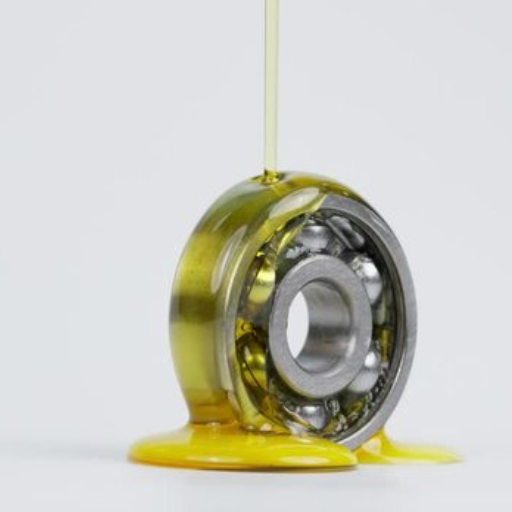
Factors Influencing the Type of Lubricant Selection
- Operating Temperature: When selecting lubricants, the operational temperature of the machinery is one of the most influential factors. Oil and grease lubricants must retain their viscosity along with effective performance in the context of the temperature range for the application. The high-temperature environment will be best served by synthetic lubricants with greater thermal stability, and low-temperature systems require lubricants with a low pour point to prevent solidification.
- Load and Speed Conditions: Bearing load and speed have a considerable impact on the choice of lubricant. High-load applications call for lubricants with a beneficial film strength and anti-wear ingredients to protect the surface from damage. On the other hand, high-speed applications tend to use low-viscosity oils and specially formulated greases to reduce friction and heat generation.
- Environmental Contamination: Greasy is usually preferred where machinery operates in dusty, wet, or chemically aggressive environments due to his better sealing ability. Corrosion resistant solid additives, like molybdenum disulfide, increase protection against the dirt and other environment contaminants.
- Re-Lubrication Intervals: Reapplication of lubricant depends on design operations and the kind of lubricant involved. Oil-lubricated systems require constant or interval topping up replenishment to perform optimally, whereas grease lubrication lowers the frequency of replenishment required.
- Compatibility Requirements: Compatibility check of the lubricant with bearing materials, sealants, and other components needs to be confirmed. The use of incompatible lubricants can result in deterioration, seal failure, contamination, and the early onset of equipment aging.
- Safety and Regulatory Policy: For certain purposes, such as in food processing or pharmaceutical industries, the use of lubricants must meet specific criteria, such as food-grade lubricants, NSF H1 certified. Such lubricants are designed to mitigate risks in scenarios where unintentional exposure to food items may occur during processes.
Taking these aspects into consideration, engineers and maintenance personnel can strategically select lubricants for the best bearing performance, longer operation life, and dependable system functionality.
Evaluating Oil Viscosity for Optimal Performance
A lubricant’s oil viscosity affects its performance. It ensures proper functioning of the mechanical system, its longevity, and prevents overheating. Viscosity impacts the reduction of friction and the rate of heat dissipation by interacting with working surfaces. It is also important from a system design viewpoint. For effective performance, lubricant oil must be evaluated based on its temperature, load, and speed. Moreover, equipment specifications should also be analyzed in detail in juxtaposition with the intended conditions. For example, machines operating at high temperatures need oils with higher viscosity, as this allows enhanced film layer stability, which prevents breakdown due to thermal stress.
Another very important factor is the viscosity index (VI) of the substance, which describes how the substance’s thickness varies with temperature. Lubricants with a higher VI value are more reliable compared to those with lower VI because they work well with thermal component fluctuations during system operation. High VI lubricants have a lower risk of causing friction or thermal fatigue. Tailormade blends containing synthetic base oils and additives often offer increased stability to oxidation, viscosity changes over temperature, and other breakdown factors.
Engineers can use digital solutions, including fluid and viscosity monitoring, to improve system performance. Real-time data collection and reporting allow for predictive maintenance strategies, which prevent machine breakdown and reduce downtime. Meeting precise operational demands, aligning the choice of oil viscosities, and employing modern oil monitoring systems significantly increase overall system reliability and efficiency.
Comparing Grease and Oil Lubricants
Widely recognized lubricants oil and grease come with their own sets of advantages. Grease is better suited for intermittent use, sealing, and contamination resistance, while oil works well on high-speed, cooling, and heat-intensive applications.
|
Aspect |
Grease |
Oil |
|---|---|---|
|
Consistency |
Semi-solid |
Liquid |
|
Usage |
Intermittent |
Continuous |
|
Cooling Ability |
Limited |
Excellent |
|
Leakage Risk |
Low |
High |
|
Contamination |
Resists well |
Washes away |
|
Maintenance |
Infrequent |
Frequent |
|
Speed Suitability |
Low to medium |
High |
|
Heat Tolerance |
Moderate |
High |
|
Additives |
Solid-based |
Soluble |
|
Disposal |
Complex |
Easier |
What are the Best Practices for Oil Lubrication in Bearings?
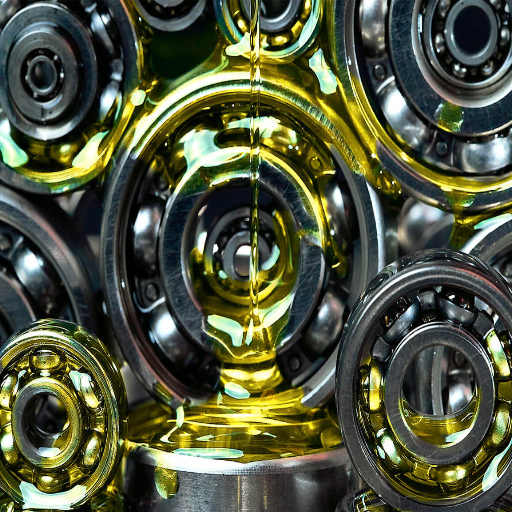
Determining the Correct Amount of Oil
I always make oil calculations for bearing lubrication based on the operating conditions first, which include the bearing speed, load, and temperature. It is crucial to consider these aspects so as to not impair lubrication, cause overheating, or excessive drag. lubrication can lead to increased friction which in return will generate heat that could be detrimental over time. This damage is often not limited to the bearing itself but may extend to the surrounding components. Therefore, accuracy is extremely important.
I follow the guidelines of the manufacturers as a starting point since they have general policies based on the specific design and working conditions of the bearing. For instance, the oil level sight glasses, dip sticks, and constant level oilers are great aids towards maintaining the correct quantity of oil for measurement. I monitor the tools that were stipulated regularly to keep the quantity of oil within the acceptable levels, because monitoring is critical in maintaining optimal conditions. Using these methods, in conjunction with condition monitoring, aids in my assessment of lubricant performance over time.
For fast-paced or extensive temperature use cases, I assess the need for added systems such as forced lubrication or oil mist systems. These systems control the oil delivery and guarantee that the bearings function optimally under extreme conditions. I achieve optimized bearing performance, prolonged service life, and reduced chances of mechanical failure by scalping the oil volume to the specific needs of each use case. I adjust my lubrication techniques to ensure the long operational lifetime of equipment through this meticulous and methodical approach.
Implementing Mist Lubrication Techniques
Mist lubrication systems are intentionally crafted to supply critical components like bearings, gears, and spindles with lubricant in a controlled manner as finely divided particles. In this technique, the lubricant is atomized using a high-velocity air stream. This results in a mist that is further refined to the specified application point. With the aid of air streams, the dispersion of mist is uniform, thus minimizing the coefficient of friction and wear between the sliding surfaces of components.
Some benefits of mist lubrication systems are increased cooling and improved conservation of lubricant because it supplies the exact amount needed to the equipment shaft. Also, mist systems have lower contamination, which helps maintain cleanliness in harsh environments like manufacturing and power generation. Technical data indicates that with proper application, mist lubrication compared to traditional methods adds 30% to the life of components, which outlines its efficiency underlying reliability.
For the best possible outcome, it’s critical to synchronize system settings like airflow, pressure, and droplet size with the machine’s operational needs. Modern monitoring devices with real-time sensors can offer constant feedback to maintain dynamic adjustment of lubricant flow and mist distribution to variable operating conditions. This adds a safety net that minimizes mechanical failures and downtime considerably. As a result, sophisticated engineering blends with state-of-the-art mist lubrication technology optimally for durability and sustainable performance in today’s industrial systems.
Maintaining Proper Oil Flow Rate
In mechanical systems, the optimal oil flow rate is crucial as it impacts the system’s operation and longevity. It requires precision, as the oil flow rate regulates lubrication, component heating, and movement protection. Automated feedback flow control systems equipped with real-time sensors are commonplace nowadays. These systems actively adjust the distribution of oil according to the changing working conditions, constantly measuring parameters like viscosity, temperature, and pressure.
Recent advances in industrial data analytics combined with computational modeling have sharpened the predictive capabilities regarding flow irregularities. Insufficient and excessive flow, in particular, are increasingly recognized as substantial inefficiencies not only in lubrication but also in wear and tear, energy consumption, and, in excess, environmental degradation. The industry is increasingly adopting a best practice paradigm whereby automated diagnostic equipment is used for regular calibration, while manufacturer-defined flow rate limits based on the machine’s operational intensity, environmental conditions, and relevant variables are scrupulously followed.
Incorporating predictive maintenance algorithms alongside this data-driven approach ensures that the oil flow stays within optimal levels. Industries can significantly reduce equipment deterioration, operational downtime, and maintenance costs with the implementation of smart monitoring solutions, which sets a standard for sustainable industrial practices within lubrication management.
How Does Grease Lubrication Differ from Oil Lubrication?
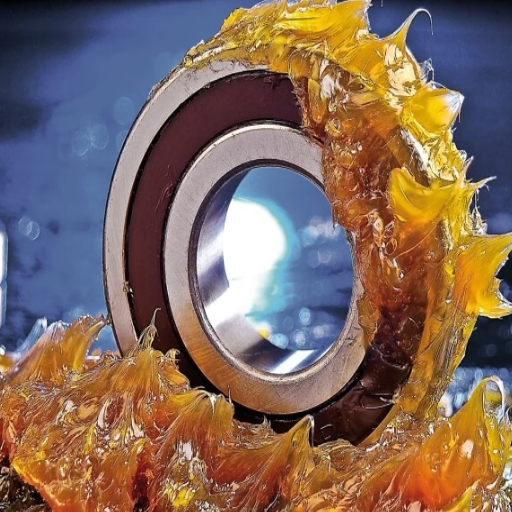
Advantages of Grease Lubrication in Specific Applications
- Longer Intervals Between Lubrication: Re-lubrication intervals are easier to sustain with grease than oil. Grease also provides a greater lubrication layer than lower maintenance systems, aiding sealed bearings and components, which are difficult to maintain, like parts of a conveyor system or electric motors.
- Adjusted Sealing Characteristics: In contrast to oil’s ability to lubricate several items at once, multi-purpose grease is pliable and only allows movement in a single direction making it a useful seal. This is helpful in controlling pollution in outdoor applications such as exposed machinery where clean lubrication is vital for sustained seamless operation.
- Effective at Extreme Temperatures: Certain types of industrial grease have been manufactured to withstand extreme pressures and temperatures making them favourable for usage in heavy industrial equipment or vehicle parts such as wheel bearings. For example, high-temperature grease can withstand temperatures of over 500°F without compromising its structural integrity.
- Reduced Leakage: Unlike oil lubricated systems, grease sticks to applied surfaces and is considerably less prone to leakage. The elevation or angle of the pump shaft has vertical or inclined portions—these portions are highly useful for decreasing lubrication shaft lift requirements.
- Shock Load Resistance: Grease has a greater shock and vibration resistance because their greater viscosity keeps them in place during sudden load changes. This property makes them favorable in the case of heavy machinery used in mining, construction, and agricultural equipment which often subject to impact forces and dynamic loads.
All of these advantages combine to demonstrate how lubrication with grease performs better in some cases and achieves performance, life, and cost benefits in various industrial applications.
Understanding High Temperature Challenges
Operating machinery in extreme temperatures poses significant challenges, especially for effective lubrication. Under higher temperature conditions, thermal degradation of conventional lubricants tends to occur, which is identified by a loss of viscosity, evaporation, and oxidation of oil and grease constituents. Deterioration of lubricants results in increased friction, which in turn leads to the accelerated wear and tear of critical machine components.
The thickening agent’s stability is one of the most important concerns on high temperature operations. Certain thickeners may be subject to heat deconstruction meaning they can lose their structural integrity over time. Additionally, the flashpoint of base oil, which is the measure of ability to be set on fire, is another determining factor for high temperatures. Risks associated with oxidation also rise significantly in high temperatures, causing harmful fume residue to build up and block the machine.
The performance of lubricants can also be improved with specialized additives, such as antioxidants and anti-wear compounds. Having an appreciation of such technical details helps the engineers, along with the maintenance staff, make the right choice for high-temperature lubrication strategies, which optimizes equipment longevity while minimizing expensive operational halts.
Managing Contamination Risks with Grease
Particulate or solid contaminating particles pose one of the highest hurdles that grease lubricated systems face when it comes to performance and life span. Any moisture ingress or chemical combination can degrade the grease, which can lead to inadequate lubrication, accelerated wear, and ultimate failure of the components. Effective primary management of contamination risk starts with the use of grease formulations based on quality thickeners and base oils that resist the effects of contamination. For instance, greases that exhibit better resistance to water washout and improved oxidation stability are suitable for chemicals and moisture-prone environments.
Robust sealing methods, such as labyrinth or contact seals that completely block off the entry of particulates and water, are a critical step in corrosion reduction. Cleanout maintenance, such as inspection and purging of greased points, ensures contaminants do not reach critical mass, which is harmful. Controlled lubrication, such as the use of automated dispensers or tools that are spotless, cuts down on external contaminant exposure during application.
Based on the information available on contamination failure modes, almost half of bearing failures are linked to a lack of sufficient lubrication, with contamination being the leading issue. Proactive approaches, which include monitoring grease quality with FTIR (Fourier Transform Infrared Spectroscopy) and particle counting, take proactive measures against contamination. Industries can combine best practices in maintenance and advanced diagnostic technologies with sophisticated grease formulations to manage contamination risks and ensure dependable equipment operation while reducing unpredictable downtimes.
What are the Common Challenges in Bearing Lubrication?
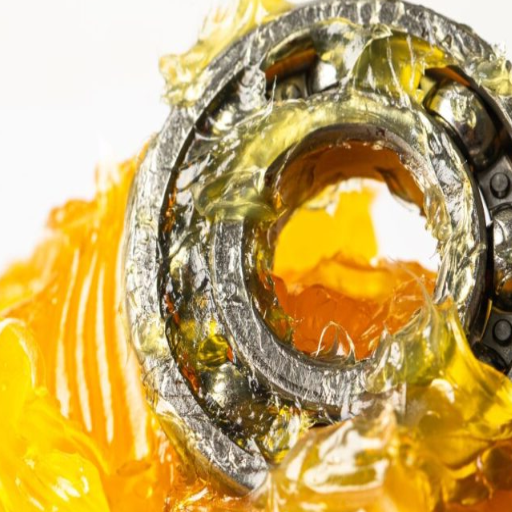
Identifying Symptoms of Bearing Failure
Identifying the signs of bearing failure is crucial in avoiding costly repairs to equipment and extensive downtime. Bearings exhibit several signs parallel to failure, which can be managed by consistent inspection and diagnosis. Here are five symptoms of bearing failure, along with their details and implications for effective detection:
- Abnormal Noise Generation: Bearings have a specific noise range that indicates their proper functioning; however, unusual noises like grinding, squealing, or growls are red flags. It could suggest mechanical wear and tear. Contamination, lubrication starvation, and component damage are key culprits of these noises.
- High Operating Temperatures: Increase in temperature is often associated with bearings failing. Increased temperature may be a result of lubrication shortage, overload, or even misalignment. Excessive heat can also suggest failure. In addition, overheating issues can be monitored thermally, or utilizing temperature checking systems.
- Vibration Patterns or Irregularities: Bearings suffering from rest neglect tend to exhibit abnormal vibration patterns. With the help of vibration analysis devices, changes in acceleration, velocity, and displacement are check for which arise from imbalances, misalignment, or destruction of bearing surfaces.
- Visible Lubricant Contamination: External contaminants that may come from dirt, water, or even in the form of metal particles, grease, and lubricants can drastically affect bearing operation and life. Regular grease analysis through particle counting or spectrographic methods helps in early detection of contaminants.
- Physical Damage or Surface Wear: Inspections can also detect cracks and spalling, pitting, or even discoloring of bearing surfaces. These physical facets are typically manifestations of ultimate stress, contamination, or fatigue over time and indicate a critical state of damage that is beyond recovery and requires immediate repair or replacement.
Inspection with diagnostic tools such as ultrasound, thermal cameras, and vibration analysis augments precision in identifying symptoms, which improves maintenance action planning.
Addressing Corrosion Issues in Bearings
Corrosive wear in bearings is an advanced problem that critically affects the function, effectiveness, and lifetime of equipment. It mostly occurs due how bearing surfaces are subjected to moisture, contaminants, or chemicals, leading to the formation of rust or chemical degradation. This process is catastrophic in causing some surface pitting, loss of load capacity, and overall catastrophic failure. This problem is aggravated in regions of high humid salty water and aggressive industrial chemicals and corrosion further worsens these problems.
Protecting against these types of problems can be done using specially formulated protective coatings, as phosphates or ceramic advanced materials, or even nickel plating due to their added strength. In harsher conditions, bearing construction using stainless and corrosion-resistant alloys greatly improves their performance. Water-resistant or anti-corrosive lubricants significantly guard against moisture penetration, bolstering bearing lubrication. Strict maintenance policies reduced the inspection gap, and actively drying surfaces greatly protects against these issues.
Newer developed shielding and sealing on bearing exteriors retard ingress of external dirt and contaminants. Special-purpose lubricants containing corrosion inhibitors drastically reduce failure time in use. Fitting these modern, environmentally conditioned vibration data sensors allows timely notifications for lifting, other detection, and prevention issues before problems get serious. Implementing these all-inclusive methods will enable effective management of corrosion in bearings while attaining operational reliability over a long period.
Ensuring Proper Lubrication Under Varying Operating Conditions
Achieving optimal lubrication requires proper comprehension of load, speed, temperature, and the applicable environment, which impact the performance of the bearing. Lubricants must be meticulously tailored for specific operational requirements. For example, low-viscosity lubricants are a must for high-speed applications to reduce drag and friction, while high-load, or high-temperature environments typically require high-viscosity synthetic lubricants that can withstand thermal breakdown and preserve the film strength.
Shifts in temperature also play a vital role in determining how effectively a lubricant can perform. In extreme cold, lubricants can thicken and yield to higher viscosities, while high temperatures can thermally degrade the lubricant, or even evaporate, resulting in equipment failure. In addition, multi-grade oils or greases with broad temperature tolerances can address these issues.
In addition, the right lubrication intervals must also be followed to respond to different operating conditions and resupply reduced lubricant amounts. The newly available Automated Lubrication Systems (ALS) tackle these issues very well by consistently providing the operational cycle lubricants, thus automated systems, together with real-time monitoring features, allow for dynamic optimization of lubrication adjustments.
Equipment that undergoes rigorous tasks is guaranteed to perform consistently without interruptions, mitigating excessive wear and tear and increasing reliability by integrating advanced operational factors.
Frequently Asked Questions (FAQ)
Q: What is the primary purpose of lubricating ball bearings?
A: The primary purpose of lubricating ball bearings is to protect the bearing surfaces, reduce friction, and prevent contaminants from entering the bearing, thereby extending bearing life.
Q: How does incorrect lubrication affect rolling bearings?
A: Incorrect lubrication can cause rolling bearings to lose their lubricating properties, leading to increased friction, wear, and potential failure of the bearing over time.
Q: What are the benefits of using synthetic oil for bearing lubrication?
A: Synthetic oil provides superior performance in extreme temperatures and high speeds, maintains a stable oil film, and can extend the bearing life compared to traditional mineral oil.
Q: How does the viscosity ratio affect bearing lubrication?
A: The viscosity ratio determines the thickness of the oil film, which is crucial for ensuring proper lubrication condition. A suitable viscosity ratio helps maintain effective lubrication and prevent metal-to-metal contact of the rolling element.
Q: What is the jet lubrication method, and when is it used?
A: The jet lubrication method involves directing a high-speed jet of oil at the bearing surfaces to ensure that oil is supplied effectively, commonly used in high-speed applications to maintain a consistent oil film.
Q: Why is preventing contaminants from entering the bearing important?
A: Preventing contaminants from entering the bearing is crucial because contaminants can damage the contact surfaces, leading to increased wear and a reduction in bearing life.
Q: What role do lubricants and lubrication play in bearing operating conditions?
A: Lubricants reduce friction between rolling elements and the outer ring, ensuring smooth operation under various bearing operating conditions, which is essential for optimal performance and longevity.
Q: How can oil systems enhance the lubrication of roller bearings?
A: Oil systems can provide a consistent oil supply and maintain an appropriate lubrication condition, allowing roller bearings to function efficiently and prevent overheating or damage.
Q: What types of lubrication are suitable for low-speed applications?
A: For low-speed applications, thicker lubricants like grease, often lithium-based, and oils with higher viscosity are suitable as they provide a stable lubrication condition and protect against contaminants from entering the bearing.
Q: How does bearing size influence the choice of lubricant?
A: Bearing size affects the type of lubrication needed; larger bearings may require more viscous lubricants to ensure adequate coverage and maintain the oil film, whereas smaller bearings may operate efficiently with less viscous options.
UCTH213-40J-300 with Setscrew(inch)
CNSORDERNO: Normal-duty(2)
TOGN: UCTH213-40J-300
SDI: B-R1/8
SD: 2 1/2
UCTH212-39J-300 with Setscrew(inch)
CNSORDERNO: Normal-duty(2)
TOGN: UCTH212-39J-300
SDI: B-R1/8
SD: 2 7/16
UCTH212-38J-300 with Setscrew(inch)
CNSORDERNO: Normal-duty(2)
TOGN: UCTH212-38J-300
SDI: B-R1/8
SD: 2 3/8
UCTH212-36J-300 with Setscrew(inch)
CNSORDERNO: Normal-duty(2)
TOGN: UCTH212-36J-300
SDI: B-R1/8
SD: 2 1/4
UCTH211-35J-300 with Setscrew(inch)
CNSORDERNO: Normal-duty(2)
TOGN: UCTH211-35J-300
SDI: B-R1/8
SD: 2 3/16
UCTH211-34J-300 with Setscrew(inch)
CNSORDERNO: Normal-duty(2)
TOGN: UCTH211-34J-300
SDI: B-R1/8
SD: 2 1/8









